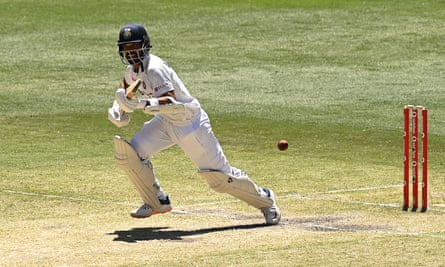Turnarounds do not come much more drastic than this. As Ajinkya Rahane led India to a series-levelling win against Australia in Melbourne, making it 1-1 with two Tests to play, the factors counting against it needed counting on at least the fingers of both hands.
It was not just the usual difficulty for any team of winning Test matches away from home. Start with the fact that it was 10 days since India had been bowled out for 36 in Adelaide, an entire Test innings done with inside 23 overs. Through long-past tours when far weaker Indian teams were completely outmatched in alien conditions, even against combinations like Lillee and Thomson or McGrath and Warne, none had suffered such an indignity.
For people who devote their lives to being good at one specialised thing, such a failure would be deflating and humiliating in ways that are hard for the rest of us to understand. Think of a celebrity chef who burns down the studio, live on air.
At that point the captain has to leave the tour. Virat Kohli and his authoritative silvery beard, the man with 60 international hundreds, the guy who has made tons on each of his last three Australian tours, taken out of the lineup. He was swapping his teammates for a newborn baby, presumably thinking it had less chance of shitting itself.
But it was not just that. When India won in Australia two years ago, the first time any Indian team had managed such a feat, it was built on bowling power. India brought a whole battery, an arsenal, the bowling version of Schwarzenegger getting kitted up on that beach in Commando. Ishant Sharma’s height and swing, Mohammed Shami the ruthless accuracy, Jasprit Bumrah’s mystery trajectory, with the bench depth of Umesh Yadav and Bhuvneshwar Kumar. Five outstanding fast bowlers, good to go.
This time around, Bhuvneshwar was injured well in advance of the tour. India flirted with Ishant being fit in time but he wasn’t. Shami had his arm broken as the final indignity of the 36 not out, then Umesh pinged his calf after three overs of the second innings in Melbourne. Of the armoury, Bumrah is the only gun still firing, relying on Ravichandran Ashwin’s spin to partner him.
Put all of that together, and India had no right to even compete in Melbourne. They should have been on the way to 4-0 down, spared only by weather. Instead they produced one of the most marked inversions, a repudiation of the idea of momentum compared to the reality of skill.
Most interestingly, there was a lack of drama to the whole affair. No smoke bombs, lasers, the whole Matrix cosplay. There was tension and there was intrigue, but this did not rely on a barrage of bouncers or a blaze of sixes. Fundamentally there was a team quietly exceeding its opponent consistently over the course of three and a half days, until their win shifted from likely to inevitable.

This was Kohli’s India reshaped for the week as Rahane’s India, morphing cartoon-like into the new captain’s image. Solid, sober, and too good. It was Rahane who led the difference, influencing the game right from the first day. Australia winning the toss and batting should have been deflating in itself, usually a sentence to two days of bowling pain. But Rahane brought in an attacking field, applied the clamps and away they went.
Australia struggled to score and the risk was always there. Rahane’s use of leg slip and leg gully brought the wickets of Steve Smith and Marnus Labuschagne, Australia’s two bankers for runs. His off-side cordon was active elsewhere. His use of Mohammed Siraj on debut helped dismiss Cameron Green. Then on the second day, Rahane came to bat.
Before that day, the legendary all-rounder Vinoo Mankad was the only Indian player with two Test tons at the Melbourne Cricket Ground. By the day’s end, Rahane had joined him, following on his crazy-brave counterattack of Mitchell Johnson in 2014 with a far more measured effort against a bowling attack that worked in unison. For hours Rahane withstood the stifle, then in the closing overs against the second new ball he broke free. His 112 took India to a lead of 121.
Again it was Rahane’s marshalling of resources in the second innings that kept Australia to an even 200, despite India losing an opening fast bowler early in the show. Then on the final day Rahane had to come in at 19 for two, a nervous moment even in a small chase of 70. It was the kind of match-long contribution from a less celebrated player that would once have come from Rahul Dravid. Think Adelaide 2003, Dravid having to score an unbeaten 72 in the second innings to win the match after 233 in the first.
In his calm wake came his team. Shubman Gill on debut, unafraid to play his shots while opening the batting to make 45 and 35 not out. The inclusions of Rishabh Pant and Ravindra Jadeja, who were as vital in supporting Rahane’s century as he was in scoring it. The shared bowling duties of Bumrah, Ashwin, Jadeja and Siraj.
Games are not supposed to end that quickly at the MCG. Teams are supposed to bat forever. India were supposed to be rolled into the centre-wicket mud, each as flat and dull as one another. But the head curator Matt Page did his part with a wonder of a pitch, breathing oxygen into what was once pure carbon dioxide, and India did theirs while using it. Reanimating something that seemed drained of life is a very special skill. Perhaps Page and Rahane can swap notes.

Comments (…)
Sign in or create your Guardian account to join the discussion